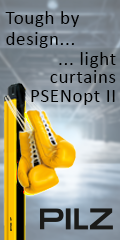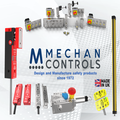
Posted to News on 12th Oct 2007, 18:41
New radial laser welding process for plastic assemblies
Plastics are playing an ever-increasing role in high-volume manufacturing applications, and this brings challenges in developing welding and joining procedures that are proven to be effective and versatile. Traditional joining procedures for plastics such as ABS, PA, PC, PP, PMMA and COC include glue cured by heat or UV light, as well as ultrasonic welding. However, many of these procedures have disadvantages in medical applications because of adhesive dispensing problems, the chemical and surface properties of the adhesives or, with ultrasonics, the particulate generation.
As a result of these limitations, alternative welding and joining procedures are being developed to meet the critical requirements of a wide range of manufacturing applications. For example, laser welding is increasingly being recognised as an innovative and flexible method of joining a wide range of plastics and Leister Lasersystems is a specialist in this technology.
Leister, which is represented in the UK and Ireland by Horizon Instruments, has developed a number of laser welding concepts that are suitable for a range of joining applications, including systems for contour welding, simultaneous welding, quasi-simultaneous welding and mask welding. Radial welding is also part of the Leister family of systems, enabling cylindrical components to be bonded without any movement or rotation of the parts.
The innovative radial welding method employs a conical mirror that deflects the laser beam such that it impinges radially on the surface of the component. The tight fit between the joining parts ensures that the correct clamping pressure is applied for the welding process, with the component remaining in a fixed position during the circumferential, continuous welding process.
Features and characteristics of the Leister radial welding method include:
- Suitable for components with different diameters
- No rotational movement required
- High throughput
- No clamping required
This welding method is therefore likely to be popular for medical device and biotechnology manufacturing applications such as tube fittings and filter housings.
Want the latest machine building news straight to your inbox? Become a MachineBuilding member for free today >>















